The best varieties of honeysuckle for the Leningrad region and recommendations for choosing the right one
The Leningrad Region has a warm and humid continental climate, so any berries are grown here without any problems. Along with cherries, raspberries and currants, summer residents plant honeysuckle in the plots - a vitamin, unpretentious and tasty berry pleases with a stable yield and strong immunity. It is not afraid of frosts and winds, it is versatile in use: the fruits are eaten fresh, dried, frozen. Consider a description of the varieties of honeysuckle for the Leningrad region and make a rating of the best.
The content of the article
Requirements for the choice of honeysuckle for the Leningrad region
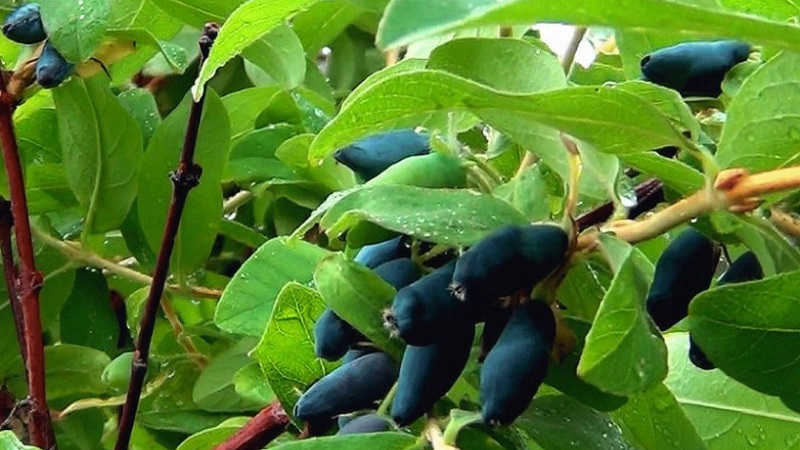
In the North-West region there is no abundance of fertile soils, therefore the main requirement for the variety is undemanding to the soil. Otherwise, the plant grows weak, and the yield will be unstable. The region is dominated by loamy and sandy loam soils with neutral or negative acidity. Before planting, it is recommended to lime them, dig up and add a mixture of peat, manure, compost.
Honeysuckle must be frost-resistant to withstand sudden temperature changes and spring frosts. Recommended indicators of winter hardiness - -25 ° С. In this region, varieties that are resistant to high humidity are popular, since due to frequent rains and fogs, the berries crack, lose their taste and marketability.
Attention! Rains cause the development of viral and fungal diseases: gray rot, powdery mildew, fruit rot. It is recommended to plant varieties that are immune to diseases and insect pests.
The best varieties for the Leningrad region and the North-West region
A selection of the best varieties of honeysuckle will help you study the characteristics of each, compare the size and taste of fruits, yield and early maturity.
Dessert
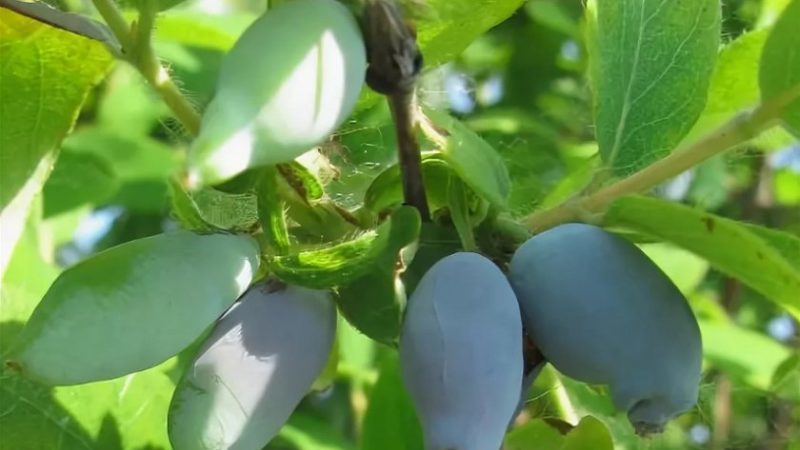
The variety is mid-season, frost-resistant and unpretentious in cultivation. Medium-sized and spreading bushes bear fruit stably both in sunny areas and in the shade or partial shade. Leaves of a rich green hue, oval. The color of the berries is interesting - purple, with a burgundy tint. Weight - about 2 g, separation is dry, the skin is strong, with a waxy coating. The pulp is tender and juicy, the taste is sweet, with a pleasant sourness, there is no bitterness. The berries do not crumple or crack, they are used for storage and transportation.
Moraine
The mid-early variety is immune to disease, rarely damaged by pests. The crop is harvested in mid-June, the fruits ripen together, do not crumble. The bushes are vigorous, with greenish-brown shoots, the berries are large, weighing up to 1 g. The shape is elongated, pitcher-shaped, blue-blue, with a waxy bloom. The pulp is juicy and aromatic, the taste is sweet and sour.
To increase yields, 2-3 other varieties are planted next to Morena's honeysuckle (for example, Blue Spindle, Viola). Berries are used to make jam or eaten fresh.
Nymph
Honeysuckle Nymph is common in all regions of Russia. It is easy to care for, it is not affected by fungal diseases. The frost resistance of the variety is up to -30 ° C, so frosts and cold are not terrible for the plant. Ripening period is medium early, vigorous bushes. The leaves are large, dark green, the flowers are large. The berries are elongated, fusiform, the average weight of one is 0.8 g.The color is blue-blue, the surface is slightly hilly. The taste is sweet and aromatic, the berry is good in any form.
Attention! To increase yields 2-3 years after planting, carry out the first pruning of the plant. In the fall, dry and short branches, shoots with poor growth are removed. After another 3-4 years, honeysuckle is rejuvenated - all old branches are cut off, only young shoots are left on the lower shoots.
Swan

The variety is mid-season, the first crop is harvested in early or mid-July. The swan is resistant to shedding, the fruits stay on the branches for 3-4 weeks after ripening. The bushes are compressed, vigorous, the leaves are large. The berries are oval, with a curved base, blue-blue color. The fruits are one-dimensional, the average weight is 1.2 g, the skin is thick, the waxy coating is weak. The consistency is dense, gristly, the taste is sweet and sour. Tasting assessment of berries - 4.8 points. High resistance to frost and drought.
Malvina
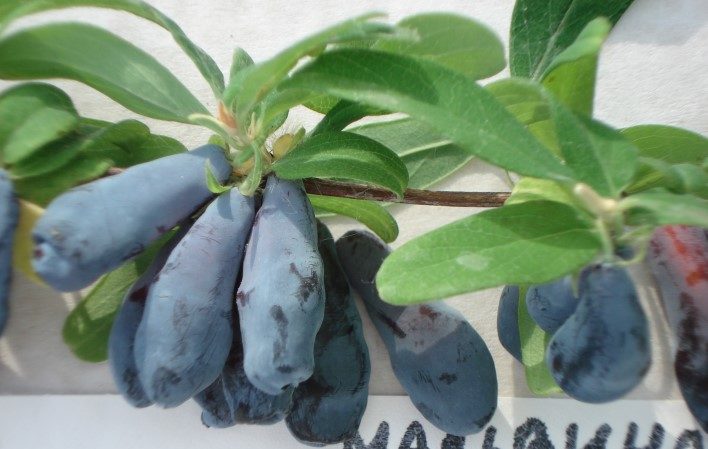
Medium bushes with an oval crown look original on personal plots. The shoots are thin and straight, the leaves are dark green, large and oval. The berries are pear-shaped, elongated, the weight of one is about 1 g. The color is blue-blue, with a thick layer of wax bloom. The taste is sweet and sour, the aroma is rich.
Malvina's honeysuckle is grown for personal consumption and on an industrial scale - the berries are transportable, keep well, and do not spoil on the way.
Volkhova
Mid-season universal variety. The plant is medium-sized, with thick and straight shoots. The berries are oval, elongated, with a pointed tip. The weight of one is about 0.8 g, some specimens reach 1.4 g. The color is blue-blue, the rind is of medium thickness. The taste is sweet and delicate, the tasting score is 4.7 points.
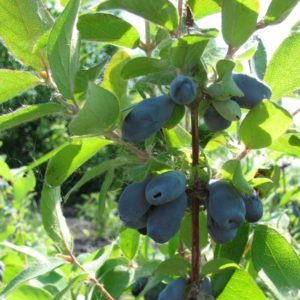
Volkhova is not damaged by diseases, pests, but it is susceptible to the composition of the soil - for a regular harvest it is recommended to add superphosphate, wood ash, and potassium salt to the soil. The variety requires planting near the pollinator and sufficient moisture.
Yoke
The plant is medium-sized, fast-growing, erect shoots, with weak pubescence. The variety is fast-growing, starts bearing fruit 3 years after landing... In cultivation, it is unpretentious, rarely affected by diseases and insects. The berries are elongated, oval, blue-violet in color, the weight of one is about 0.8 g. The wax coating is medium, the skin is strong. The consistency is delicate, the taste is sweet and sour, not bitter.
Attention! Some honeysuckle berries are bitter. The reasons for this lie in the characteristics of the variety and non-compliance with the rules of care. To remove the unpleasant aftertaste, the berries are frozen - low temperatures remove the bitterness. Compotes and jelly are cooked from such fruits.
Masha
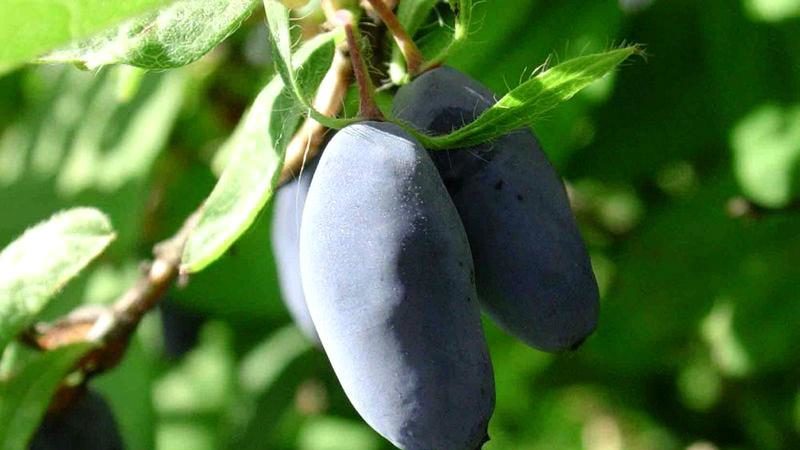
The mid-season Masha variety is popular in all regions of the country. Summer residents appreciate honeysuckle for its taste: the pulp is sweet and sour, with a rich aroma and a slight bitterness. Tasting score - 4.4 points. The average weight of the fruit is 1.1 g, the separation is dry or semi-dry. The color is deep blue, there is a medium waxy coating that protects the berries from cracking and mold.
The variety is resistant to temperature fluctuations in winter, is not affected by wasps and aphids. To increase the yield, honeysuckle is planted in sunny and spacious areas, 2-3 more varieties are placed next to it.
Pushkinskaya
An early ripe dessert variety, harvested in early summer. Bushes are medium spreading, with thick shoots. Leaves are large, dark green. The berries are cylindrical, bluish-blue, the skin is thin, with a waxy coating. Fruit weight - about 1 g. The taste is delicate sweet and sour, with a pleasant aroma.
The variety is suitable for production cultivation, processing, transportation and storage. A fast-growing culture - the first crop is harvested 3-4 years after planting.
Early varieties of honeysuckle for the Leningrad region
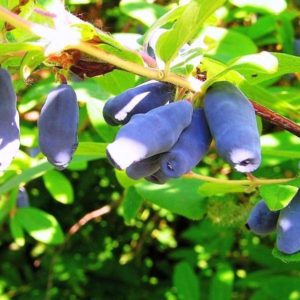
Early varieties give a harvest at the beginning of summer, the fruits are used for fresh consumption and preparation of winter preparations.
- Summer residents distinguish a variety Titmouse, versatile in use and unpretentious in cultivation.The berries are oval, weigh about 0.8 g, the color is yellow-blue, almost black, saturated. The taste is harmonious sweet and sour. Tasting score - 4.5 points.
- Of the early maturing varieties, the honeysuckle in Memory of Kuminov is noted. The bushes are medium-sized, the shoots with a slight descent. Fruit weight - 1.3 g, blue color, strong skin. The taste is sweet and aromatic, the pulp is delicate in taste, without bitterness. The variety is drought-resistant and frost-resistant, the tasting assessment of berries is 4.8 points.
Average
Mid-ripening varieties ripen 2-3 weeks later than early-ripening ones. The fruiting period is extended, honeysuckle is resistant to powdery mildew, ramulariasis, cercospora, drying of branches. Summer residents often choose Omega and Elizabeth.
- Honeysuckle Omega It has a flat-round crown and large oval berries. Fruit weight - about 1 g, blue-blue color, strong skin, with a thick waxy bloom. The taste is sweet and sour and delicate, the score is 4.5 points. The variety is frost-resistant, fast-growing, easy to grow.
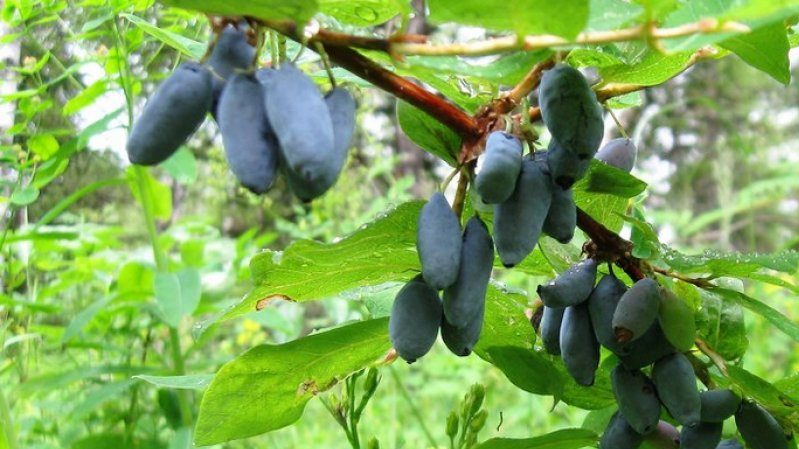
- Berry Elizabeth oval, weighs from 1.2 to 1.8 g, with a bumpy surface. Taste score - 5 points, sweet pulp, rich aroma. Elizabeth's bushes are slightly spreading; to increase yields, they are regularly pruned. The variety is resistant to heat, drought, frost, diseases and pests, suitable for industrial cultivation.
Late
Late-ripening honeysuckle yields in late July or early August... From berries, vitamin and delicious jams, jams, confitures are obtained. Late variety is popular Selena... Bushes are dense, medium-sized, with a rounded crown. Berries are black, with a blue waxy bloom, blunt tip, weigh about 1 g. The taste is sweet and sour, with bitterness. Selena is universal in application - suitable for drying, transportation, cooking.
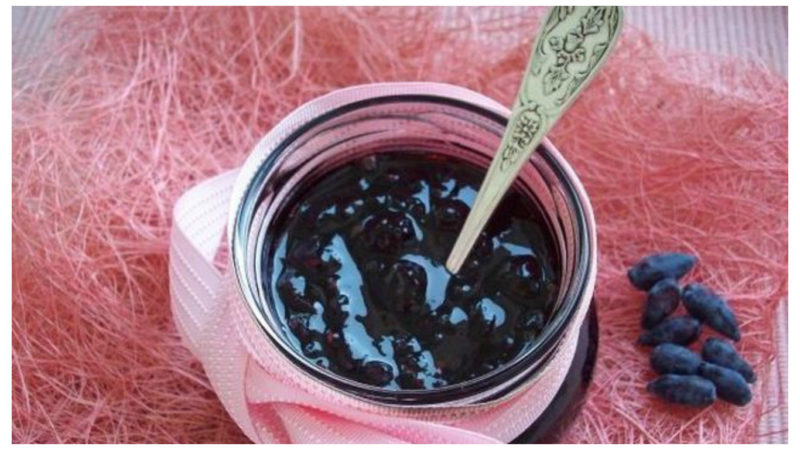
Another common late variety is Gorlinka. The berries are large, pitcher-shaped, with a thick skin. The color is blue, there is a medium waxy coating. The separation is dry, Gorlinka's tasting score is 5 points. The pulp is sweet, sour, refreshing. After processing, honeysuckle does not lose its vitamin and taste qualities. Turtleneck is not affected by diseases and pests, it is resistant to drought, heat and frost.
Other parameters
To choose a suitable variety, they pay attention not only to the ripening time, but also to the size of the fruits, self-fertility, and the appearance of the plant.
Large-fruited
Common large-fruited varieties are Bakchar Giant and the Giant's Daughter. The name of the honeysuckle speaks for itself - every year gardeners harvest large and heavy fruits.
- Bakchar giant mid-ripening, extended ripening period. The shoots are thick, the leaves are large dark green. The berries are oval blue, with a bloom, weigh about 1.8 g. The taste is sweet and sour, the score is 4.8 points, the flesh is fleshy and tender.
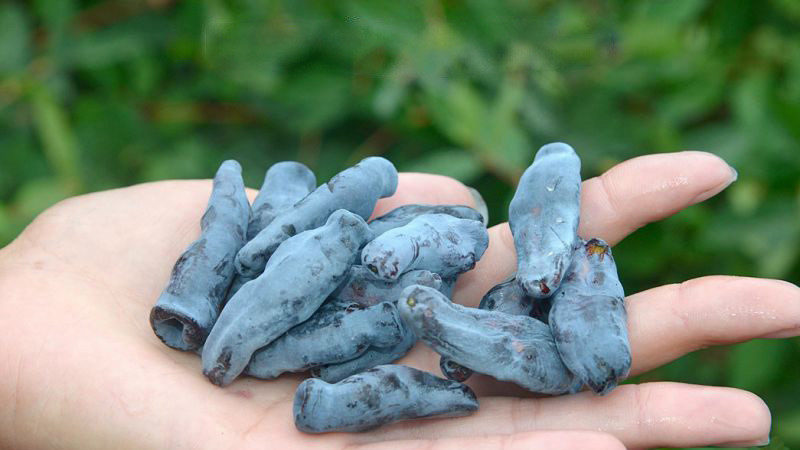
- Daughter of a giant - medium late, versatile variety. Vigorous bushes, fast-growing shoots. The berry weight reaches 2.5 g, the color is blue-violet. The consistency of the honeysuckle is dense, cartilaginous. There is a waxy coating, the separation is dry. The taste is refreshing sweet and sour, score - 4.8 points. Winter hardiness and drought resistance are high, heat resistance is average.
Self-pollinated
Self-pollinated varieties have bisexual flowers, so they do not require insects for pollination. Such honeysuckle bears fruit stably in any weather.
- From self-pollinated varieties, Yugan's honeysuckle is isolated. The shrubs are medium-sized, about 2 m high. Yugan ripens gradually, the harvest is harvested 2-3 times per season. The berries are pitcher-shaped, weigh about 1.5 g, blue in color, with a thick waxy bloom. The taste is sweet, with a refreshing aroma, score - 4.8 points. Productivity - about 5 kg per bush per season.
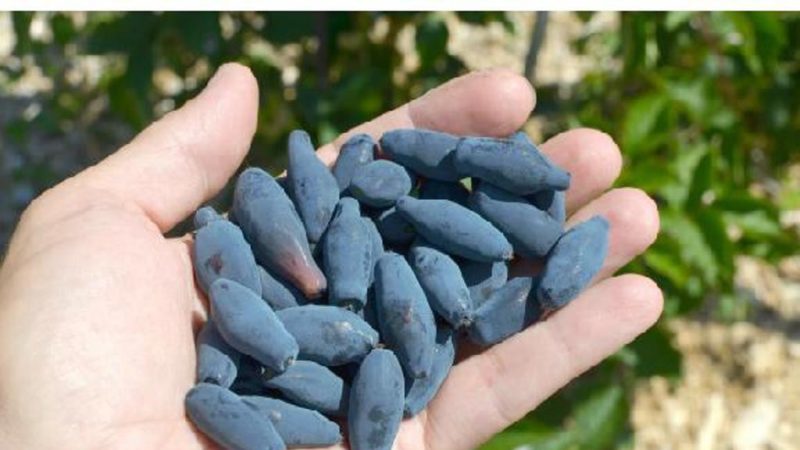
- Another well-known self-fertile variety is Sibiryachka. The berry weighs about 1 g, the color is dark purple, with a blue bloom. The taste is sweet and aromatic, the tasting score is 4.9 points. Sibiryachka bushes are medium-sized, shoots with weak pubescence. The crop is suitable for fresh consumption, processing and transportation.
Decorative
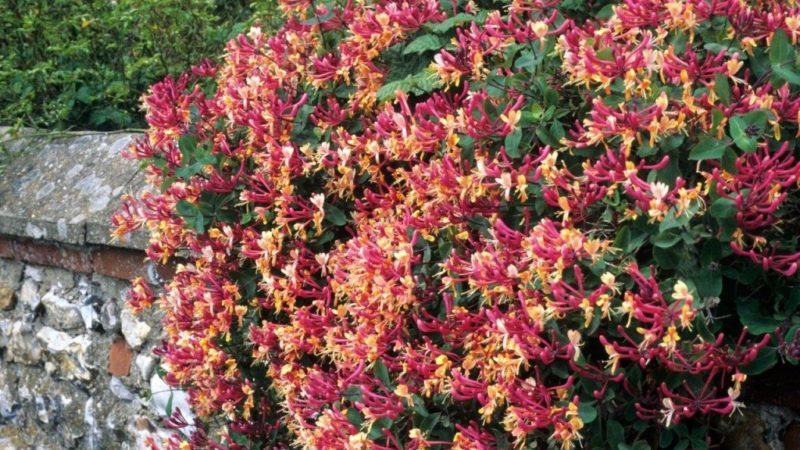
Decorative honeysuckle attracts with a lush crown and colorful flowers. Berries, depending on the variety, acquire a red, yellow, orange, purple color. Beautiful type of decorative honeysuckle - golden. The height of a dense shrub is up to 4 m, the leaves are dark green, the flowers are golden yellow. Flowering begins in May and lasts 2 weeks. The plant is rarely sick and easy to care for.
Covering honeysuckle will decorate the backyard or garden plot. The height of the bush is 3 m, the leaves are dense, rich green. The flowers are lemon red. This species grows well in the shade, frost-resistant, but demanding on moisture.
It is interesting:
Recommendations for choosing a variety
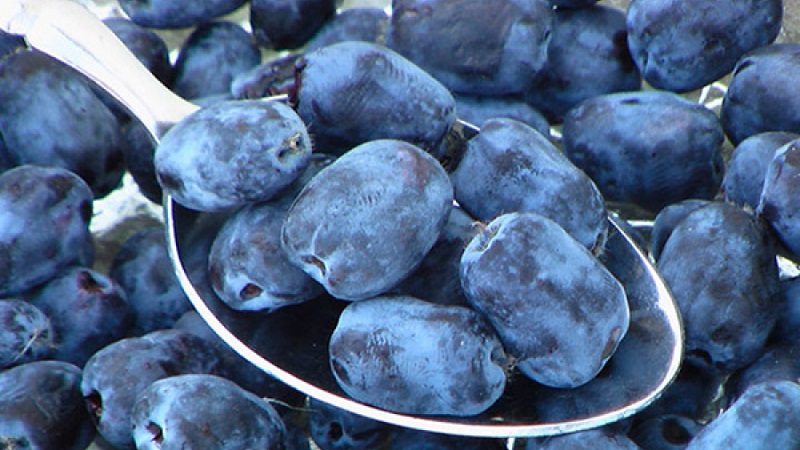
To choose the right variety, gardeners recommend remembering a few tips. For growing in the shade, shade-tolerant varieties are suitable, for a sunny area - any. If honeysuckle is cultivated for sale, pay attention to large-fruited and transportable berries, which are protected from cracking and covered with a thick waxy coating. For cooking, honeysuckle is planted with sweet-sour pulp, without bitterness. Fruits with a bitter taste are used for freezing.
When choosing a variety, pay attention to the height and size of the bush. For small areas, compact plants with a compressed crown are suitable, for spacious ones - vigorous and spreading. Decorative honeysuckle will be a decoration of any garden.
Conclusion
For the North-West of the country and St. Petersburg, unpretentious and frost-resistant varieties of edible and decorative honeysuckle are chosen. Dessert, Malvina, Nymph, Swan are distinguished by their pleasant taste, immunity to diseases and pests. From large-fruited they choose the Daughter of the Giant, from the self-fertile ones - Yugana. Pleases summer residents and decorative honeysuckle golden and veil. Before buying and planting a seedling, it is recommended to study the photo of an adult plant and read a few reviews of experienced gardeners.